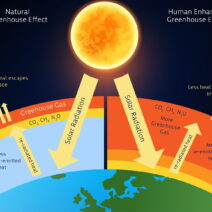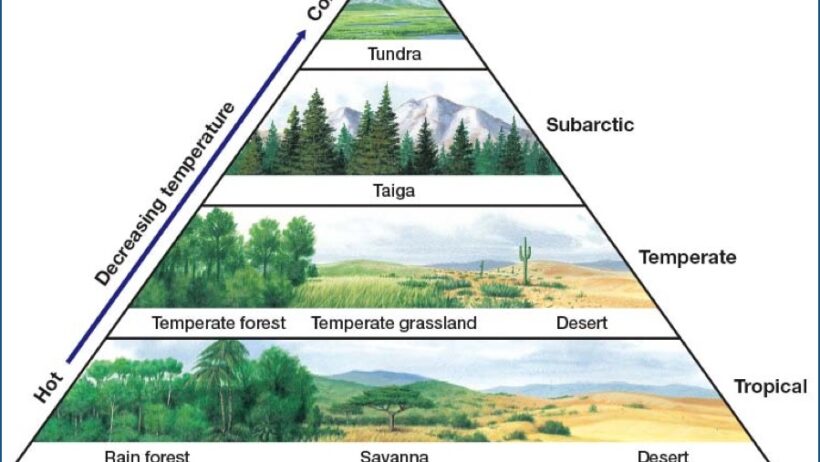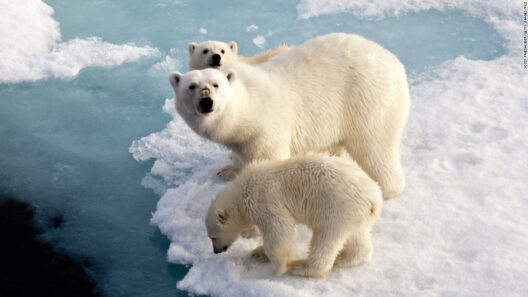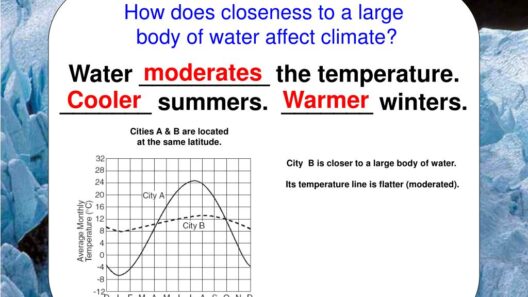The intricate tapestry of life on Earth is intricately woven through the strands of climate. Biomes, the vast ecological regions, emerge like diverse portraits painted by weather patterns. Each biome—whether a sun-baked desert or a lush rainforest—exemplifies how climate serves as both the artist and the canvas, dictating the character and behaviors of its inhabitants. This exploration delves into how climate not only fashions these unique biomes but also shapes the very essence of existence within them.
To understand the relationship between climate and biomes, one must first grasp the fundamental elements of climate itself. Climate encompasses long-term atmospheric conditions over an extended period, including temperature, precipitation, humidity, and wind patterns. It is here that we can draw parallels to the forces of a composer orchestrating a symphony, with each element playing a vital role in the overall composition. Climate influences the biological communities that flourish, survive, or perish within specific environmental parameters.
Deserts: The Parched Masterpiece
Deserts, those vast expanses of aridity, bear witness to the extremes of climate. Characterized by minimal rainfall—often less than 250 mm per year—deserts manifest a harsh, yet beautiful, paradox. They display a seemingly sterile landscape that belies their ecological significance. At first glance, one might perceive a desert as devoid of life, but upon closer observation, one discovers a resilient community of organisms, each uniquely adapted to an unforgiving environment.
These organisms manifest an array of survival strategies, akin to performers in an elaborate ballet of adaptation. Cacti, succulents, and xerophytic plants possess the remarkable ability to store water, while certain animals exhibit nocturnal habits to escape the scorching daytime temperatures. The temperature fluctuations between day and night can be dramatic, akin to nature’s own metamorphosis, showcasing the resilience of life in an inhospitable realm.
Hot deserts, like the Mojave and the Sahara, illustrate the extremes of heat, while cold deserts, such as those in Mongolia, display their dual nature—harshness in winter and dryness year-round. These diverse landscapes exemplify how climate carves the very essence of life, cultivating a uniqueness that is both stark and stunning.
Grasslands: The Rolling Sea of Green
Migrating from aridity to expansiveness, grasslands serve as a transitional biome that revels in moderate climates. Known for their sweeping vistas of tall grasses, grasslands experience seasonal precipitation that varies significantly, ranging from the prairies of North America to the savannas of Africa. The climate here is less severe, creating a dynamic environment where fire, drought, and grazing establish a cyclical rejuvenation of flora.
Grasslands serve as a stage for rich biodiversity. Among the swaying grasses, a plethora of herbivores—such as bison and antelopes—graze, while carnivores like cheetahs and wolves lurk, maintaining an intricate food web. Here, the influence of climate is palpable, dictating not only the types of vegetation that thrive but also the myriad of species that coexist, competing and collaborating for survival.
Tropical Rainforests: The Lush Canopy
In stark contrast, tropical rainforests stand as the epitome of biodiversity and productivity. Bathed in constant warmth and drenched by bountiful rainfall—often exceeding 2000 mm annually—these biomes thrive in regions near the equator, where climate delivers a lavish abundance. The result? A complex interweaving of life that is both visually arresting and ecologically vital.
The lamina of a rainforest is a labyrinth of towering trees, vibrant flowers, and a rich underbrush, embodying a vertical stratification that offers diverse habitats. From the sunlit canopy where birds and monkeys frolic to the shadowy understory teeming with insects and fungi, each layer contributes to the intricate web of life. Climate, here, acts as the nurturing mother, offering warmth, moisture, and stability, facilitating a flourishing of life that is unparalleled.
However, the reliance of tropical rainforests on climate poses its own vulnerabilities. The delicate balance is profoundly impacted by climatic alterations such as deforestation and climate change. The integrity of these environments hangs in a precarious equilibrium, revealing the profound interdependencies between climate and biome health.
Climate Change: The Unforgiving Artist
As humanity continues to tread upon the Earth, the shadow of climate change looms ominously over all biomes. The delicate brushstrokes of nature are being altered by rising temperatures, shifting precipitation patterns, and extreme weather events. Deserts may expand, swallowing once-fertile lands, while rainforests face the dual threat of drought and deforestation, wreaking havoc on the biodiversity within.
The ramifications are far-reaching. As species adapt, migrate, or face extinction, the canvas of our planet is irrevocably changed. The intricate balance achieved through eons of evolution teeters on a precipice, a stark reminder of the interconnectedness of climate and life.
In conclusion, biomes are not merely geographical spaces adorned with flora and fauna; they are living entities shaped by the climate that envelops them. From the desolation of the desert to the lushness of the rainforest, the influence of climate is both profound and exquisite. Understanding these relationships fosters a greater appreciation for the environment and highlights the urgent need to address the challenges posed by climate change. It is not merely the survival of specific species that hangs in the balance but the very legacy of our planet’s diverse ecosystems.





